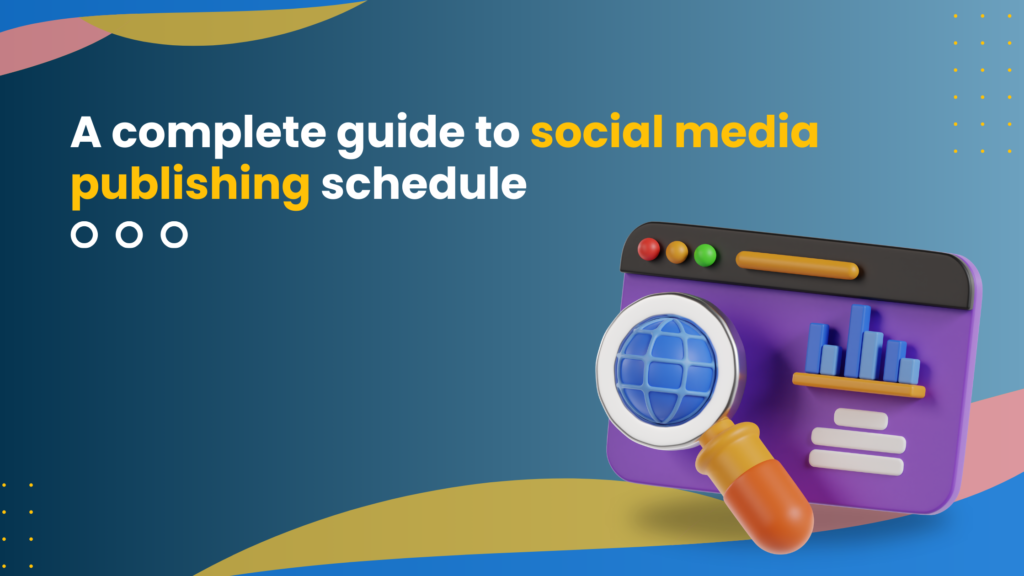In today’s fast-paced digital landscape, having a well-planned social media publishing schedule is crucial for businesses looking to maximize their online presence and engage with their target audience effectively. A social media publishing schedule is a strategic plan that outlines when and what content will be posted on various social media platforms. It helps businesses ensure consistent messaging, optimize engagement, and save time by streamlining the content creation process.
What is the Social Media Publishing Schedule?
A social media publishing schedule is a roadmap that guides businesses in managing their social media presence effectively. It entails determining the right platforms to utilize, planning themes for posts, establishing posting frequencies, creating a social media calendar, and utilizing scheduling tools.
By leveraging a well-structured publishing schedule, companies can maintain a consistent online voice and branding while delivering tailored content to their audience. This ensures that the right message reaches the right people at the right time.
Why Does Social Media Publishing Schedule Matter?
An effective social media publishing schedule holds several advantages for businesses:
1. Consistency
Consistency is key when it comes to building brand awareness and loyalty. By adhering to a publishing schedule, companies can establish regular interactions with their audience, fostering trust and familiarity.
2. Optimized Engagement
The timing of your social media posts can significantly impact engagement rates. A publishing schedule allows you to identify peak times when your target audience is most active and receptive to your content. By strategically scheduling posts during these periods, you can maximize reach, visibility, and engagement rates.
3. Streamlined Content Creation
Planning your social media content in advance enables you to allocate resources efficiently and maintain a steady flow of fresh content. With a clear roadmap in place, you can brainstorm ideas ahead of time, create high-quality assets, and review them thoroughly before scheduling them for publication.
4. Efficient Resource Allocation
A well-planned publishing schedule ensures you are allocating your resources effectively. By identifying the most effective platforms for your business and planning posts based on your audience’s preferences, you can optimize your social media efforts and allocate resources where they will yield the highest returns.
5. Data-Driven Decision Making
A publishing schedule allows you to track and analyze the performance of your social media content. By monitoring key metrics such as engagement rates, click-through rates, and conversions, you can refine your strategy and make data-driven decisions that will drive better results.
How to Create a Social Media Publishing Schedule
Crafting an effective social media publishing schedule requires careful consideration of various factors. Here are six key steps to guide you through the process:
1. Understand Your Audience Behavior
To create a successful social media publishing schedule, it’s essential to have a thorough understanding of your target audience’s behavior. Analyze data from social media analytics tools, conduct surveys, or leverage market research to gain insights into when your audience is most active online.
Consider their demographics, time zones, and preferences for different types of content. For instance, if you’re targeting a younger demographic that is more active on Instagram in the evening hours, you may want to prioritize posting visually engaging content during those peak times.
2. Choose the Right Social Media Platforms According to Your Niche
Not all social media platforms are created equal when it comes to reaching your target audience effectively. Each platform has its own unique user base and content format requirements.
Identify which platforms align best with your target audience’s preferences and interests. For example, if your customers are primarily professionals in the B2B space, LinkedIn might be a more suitable platform for sharing thought leadership articles and industry insights.
By selecting the right platforms based on your niche, you can focus your resources on creating compelling content that resonates with your desired audience.
3. Plan Out Themes of the Social Media Posts
Having a clear theme or content strategy for your social media posts helps maintain a consistent brand voice and messaging. It also ensures that your content resonates with your target audience’s interests.
Consider themes that are relevant to your industry and align with your business objectives. For example, if you’re a fitness apparel brand, you could create themes around healthy living, workout tips, or success stories from your customers.
Mapping out themes in advance allows you to brainstorm content ideas and ensure a balanced mix of educational, entertaining, and promotional posts.
4. Plan Frequency of Posting
Determining the optimal posting frequency is crucial for maintaining audience engagement without overwhelming them with excessive content. The ideal posting frequency varies based on factors such as platform, audience behavior, and available resources.
Referencing social media best practices and analyzing competitor activity can provide insights into the posting frequency that yields the best results within your industry. Experimentation is key to finding the right balance.
Consider creating a content calendar that includes specific days and times for each post. This level of planning ensures consistency while allowing flexibility to adjust based on real-time events or emerging trends.
5. Create the Social Media Calendar
Once you have identified your target platforms, planned themes, and determined posting frequencies, it’s time to create a social media calendar. A social media calendar provides an overview of what content will be published on each platform and when.
Use a spreadsheet or dedicated project management tool to map out your publishing schedule. Include columns for each platform, dates, post captions, links or attachments, and any relevant notes.
A well-organized social media calendar not only keeps you accountable but also facilitates collaboration among team members responsible for content creation and scheduling.
6. Utilize Scheduling Tools
To streamline the execution of your social media publishing schedule, leverage scheduling tools such as Hootsuite, Buffer, or Sprout Social. These tools allow you to plan and schedule posts in advance across multiple platforms, saving time and effort.
Social media publishing tools also provide valuable features like analytics, content curation, and team collaboration. By using these tools, you can ensure that your content is consistently published according to your established schedule, even when you’re not actively monitoring your social media accounts.
Conclusion
A well-planned social media publishing schedule is instrumental in achieving optimal audience engagement, maintaining consistency in messaging, and maximizing the impact of your social media efforts. By understanding your target audience’s behavior, choosing the right platforms, planning content themes, scheduling posts effectively, and utilizing automation tools, businesses can streamline their social media presence and drive meaningful results.
Remember to analyze performance metrics regularly and adjust your publishing schedule accordingly to stay ahead in an ever-evolving digital landscape.
FAQs
1. How do I schedule posts on social media platforms?
To schedule posts on social media platforms, you can utilize third-party scheduling tools such as Hootsuite, Buffer, or Sprout Social. These tools allow you to plan and queue up your content in advance, specifying the date and time for each post. This ensures a consistent publishing schedule across multiple platforms.
2. How do I create a publishing schedule?
To create a publishing schedule, start by understanding your audience behavior and preferences. Choose the right social media platforms based on your target audience’s demographics and interests. Plan out themes for your posts and determine the optimal posting frequency for each platform. Create a social media calendar using a spreadsheet or project management tool to map out when and what content will be posted. Finally, utilize scheduling tools to automate the publishing process.
3. How frequently should I post on social media, and does it vary by platform?
The optimal posting frequency on social media depends on various factors such as platform, target audience behavior, industry norms, and available resources. It’s essential to find the right balance between maintaining consistent engagement without overwhelming your audience with excessive content.
Posting frequency can vary by platform due to differences in user behavior and algorithmic considerations. For example, Twitter may require more frequent updates due to its fast-paced nature, while LinkedIn might benefit from less frequent but more thoughtful posts.
Testing different posting frequencies within your industry and monitoring engagement metrics will help you identify the ideal posting frequency for each platform.
3. Should I use automated posting or post in real-time for better engagement?
Both automated posting and real-time posting have their advantages depending on your objectives and available resources. Automated posting allows you to schedule content in advance, ensuring a consistent publishing schedule and freeing up time for other tasks. This approach is especially useful when targeting global audiences across different time zones.
On the other hand, real-time posting enables more spontaneous interactions with your audience, allowing you to respond quickly to trends or events as they happen. This approach can help foster a sense of authenticity and immediacy in your social media presence. A balanced approach that combines both automated and real-time posting based on your business goals and available resources is often the most effective strategy.






























